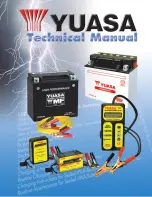
85
with the road surface, so that the car cannot be
steered or braked properly.
<
The risk of hydroplaning increases with declining
tread depth on the tires, refer also to Tread
depth on page
Driving through water
Drive through water on the road only if it is
not deeper than 1 ft/30 cm, and then only
at walking speed at the most. Otherwise, the
vehicle's engine, the electrical systems and the
transmission may be damaged.
<
Parking brake on inclines
On inclines, do not hold the vehicle with
the clutch; use the parking brake. Other-
wise greater clutch wear will result.
<
For information on driving off using Hill Start
Assist
*
, refer to page
.
Braking safely
Your MINI is equipped with ABS. If you are in a
situation which requires full braking, it is best to
brake using maximum brake pressure. Since the
vehicle maintains steering responsiveness, you
can still avoid possible obstacles with a mini-
mum of steering effort.
The pulsation of the brake pedal, together with
the sound of hydraulic regulation, indicates that
ABS is actively taking effect.
Driving in wet conditions
When roads are wet or there is heavy rain, briefly
exert gentle pressure on the brake pedal every
few miles. Monitor traffic conditions to ensure
that this maneuver does not endanger other
road users. The heat generated in this process
helps dry the pads and rotors to ensure that
Then full braking force will be immediately avail-
able when it is needed.
Hills
To prevent overheating and the resulting
reduced efficiency of the brake system,
drive long or steep downhill gradients in the
gear in which the least braking is required. Even
light but consistent brake pressure can lead to
high temperatures, brake wear and possibly
even brake failure.
<
You can increase the engine's braking effect by
shifting down, all the way to first gear if neces-
sary. This strategy helps you avoid placing
excessive loads on the brake system. Downshift-
ing in manual mode of the automatic transmis-
sion, page
Never drive with the clutch held down,
with the transmission in neutral or with
the engine switched off; otherwise, engine brak-
ing action will not be present or there will be no
power assistance to the brakes or steering.
Never allow floor mats, carpets or any other
objects to protrude into the area around the
pedals, otherwise pedal function could be
impaired.
<
Corrosion on brake rotors
When the vehicle is driven only occasionally,
during extended periods when the vehicle is not
used at all, and in operating conditions where
brake applications are less frequent, there is an
increased tendency for corrosion to form on
rotors, while contaminants accumulate on the
brake pads. This occurs because the minimum
pressure which must be exerted by the pads
during brake applications to clean the rotors is
not reached.
Should corrosion form on the brake rotors, the
brakes will tend to respond with a pulsating
effect that even extended application will fail to
cure.
When the vehicle is parked
Condensation forms while the automatic climate
control is in operation, and then exits under the
vehicle. Traces of condensed water under the
vehicle are therefore normal.
In the MINI Cooper S, the coolant pump may
continue to run for some time after the engine is
switched off. This will generate noise in the
engine compartment.
Online Edition for Part no. 01 41 0 014 701 - © 11/07 BMW AG
Summary of Contents for cooper 2008
Page 2: ...Online Edition for Part no 01 41 0 014 701 11 07 BMW AG...
Page 10: ...Online Edition for Part no 01 41 0 014 701 11 07 BMW AG...
Page 16: ...Cockpit 14 Around the center console Online Edition for Part no 01 41 0 014 701 11 07 BMW AG...
Page 18: ...Online Edition for Part no 01 41 0 014 701 11 07 BMW AG...
Page 84: ...Online Edition for Part no 01 41 0 014 701 11 07 BMW AG...
Page 94: ...Online Edition for Part no 01 41 0 014 701 11 07 BMW AG...
Page 144: ...Online Edition for Part no 01 41 0 014 701 11 07 BMW AG...
Page 162: ...Online Edition for Part no 01 41 0 014 701 11 07 BMW AG...
Page 163: ...Online Edition for Part no 01 41 0 014 701 11 07 BMW AG...
















































